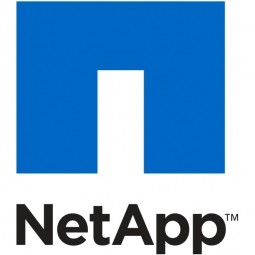
Technology Category
- Infrastructure as a Service (IaaS) - Cloud Computing
- Infrastructure as a Service (IaaS) - Hybrid Cloud
Applicable Industries
- Apparel
- Finance & Insurance
Applicable Functions
- Maintenance
Use Cases
- Inventory Management
Services
- Cloud Planning, Design & Implementation Services
- System Integration
The Customer
Unistar LC
About The Customer
Unistar LC, founded in 1989 and headquartered in Ljubljana, is one of the leading ICT providers in Slovenia. The company offers systems integration, fully managed IT services, and cloud computing solutions to businesses across the country and beyond. Unistar LC is highly experienced in IT technologies and partners with all key software and hardware vendors. The company has a team of more than 70 experts who help customers solve their IT and business challenges. Unistar LC continuously adapts its business to meet customer demand, leverage industry trends, and broaden its market footprint.
The Challenge
Unistar LC, a leading ICT provider in Slovenia, was facing a challenge in facilitating customer access to the cloud. The company had developed more than 10 brands, including Unistar PRO.cloud for hosted and managed IT services, but needed a scalable, cost-efficient, and reliable platform to enhance this offering. Despite being a NetApp partner for over a decade, Unistar LC was uncertain about choosing NetApp solutions. The company needed to ensure that the chosen solution would provide the best value for money, a quick return on investment, and compliance with Slovenia’s strict data protection regulation. Additionally, Slovenia's data protection laws do not allow personal data to leave the European Union or even the country in some cases, which ruled out the option of connecting to an Amazon or a Microsoft cloud.
The Solution
Unistar LC decided to deploy NetApp for a hybrid cloud 'made in Slovenia'. The company established PRO.cloud service across two data centers in Slovenia and used NetApp FAS8000 series systems to host and manage its cloud services. A mix of storage media enabled tiered service levels, while NetApp software catered to various service options. NetApp systems provided reliability and flexibility, allowing Unistar LC to act quickly and scale as needed. The company could also reduce costs with a secure shared storage model and great efficiency features. When customers expanded their SAP service scope and standardized IT operations on the SAP HANA platform, Unistar LC chose NetApp for the new SAP HANA PRO.cloud offering. NetApp solutions are SAP HANA certified, which allowed Unistar LC to leverage their capabilities for their unique SAP HANA service.
Operational Impact
Quantitative Benefit

Case Study missing?
Start adding your own!
Register with your work email and create a new case study profile for your business.
Related Case Studies.

Case Study
Fire Alarm System and Remote Monitoring Sytem
Fire alarm systems are essential in providing an early warning in the event of fire. They help to save lives and protect property whilst also fulfilling the needs of insurance companies and government departments.Fire alarm systems typically consist of several inter-linked components, such as smoke detectors, heat detector, carbon monoxide, manual call points, sounders, alarm and buzzer. The fire alarm system should give immediate information in order to prevent the fire spread and protect live and property.To get maximum protection a shoe manufacturer in Indonesia opted for a new fire alarm system to monitor 13 production sites spread over 160 hectars. Although the company had an existing fire alarm system, it could not be monitored remotely.It was essential that the new system would be able to be monitored from a central control room. It needed to be able to connect to the existing smoke detector and manual call point. Information should be easily collected and passed on to the Supervisory Control and Data Acquisition (SCADA) system. Furthermore, the system should have several features such as alarm management, auto reporting, being connected to many client computers without additional cost, and run 24/7 without fails. The company also needed a system which could be implemented without changing the architecture of the existing fire alarm system.

Case Study
IoT Applications and Upgrades in Textile Plant
At any given time, the textile company’s manufacturing facility has up to 2,000 textile carts in use. These carts are pushed from room to room, carrying materials or semi-finished products. Previously, a paper with a hand-written description was attached to each cart. This traditional method of processing made product tracking extremely difficult. Additionally, making sure that every cart of materials or semi-finished products went to its correct processing work station was also a problem. Therefore, the company desired an intelligent solution for tracking assets at their factories. They also wanted a solution that would help them collect process data so they could improve their manufacturing efficiency.

Case Study
Retailer Uses RFID Scanner to Improve Efficiency
Patrizia Pepe wished to improve the logistics of their warehouse: accepting incoming goods from their production sites, movement of items throughout
the warehouse, and packaging of goods for distribution to the retail locations. They initially tried to use barcodes for this function. Because barcodes must be individually scanned within a line-of-sight, the acceptance of goods coming into the warehouse was too time consuming. Working with the University of Florence, Patrizia Pepe instituted a five-month pilot project beginning in August of 2009 to test the validity of an RFID solution. The pilot involved tagging of about 60,000 items for the second seasonal collection, and convinced the company to move forward with tagging all items.

Case Study
Monitoring and Controlling Automatic Mixing and Dispensing Machines
As technology advances, textile manufacturing has been transformed from a labor-intensive to a partially or fully automated industry. Automation is significant in all segments of textile production - from spinning to printing, and textile machinery manufacturers are constantly searching for new technologies and automation processes will increase the productivity of their machines. The color paste mixing and dispensing machine is an essential part of the printing and dyeing process. With the advantage of automatically computerized controls and database management, the system can significantly improve its dispensing precision, working efficiency and production quality as well as reducing material consumption.

Case Study
Real-time In-vehicle Monitoring
The telematic solution provides this vital premium-adjusting information. The solution also helps detect and deter vehicle or trailer theft – as soon as a theft occurs, monitoring personnel can alert the appropriate authorities, providing an exact location.“With more and more insurance companies and major fleet operators interested in monitoring driver behaviour on the grounds of road safety, efficient logistics and costs, the market for this type of device and associated e-business services is growing rapidly within Italy and the rest of Europe,” says Franco.“The insurance companies are especially interested in the pay-per-use and pay-as-you-drive applications while other organisations employ the technology for road user charging.”“One million vehicles in Italy currently carry such devices and forecasts indicate that the European market will increase tenfold by 2014.However, for our technology to work effectively, we needed a highly reliable wireless data network to carry the information between the vehicles and monitoring stations.”




